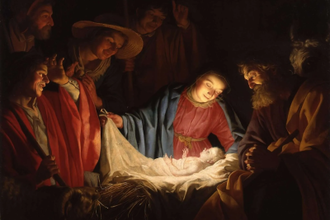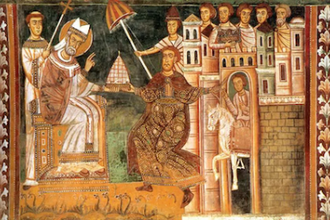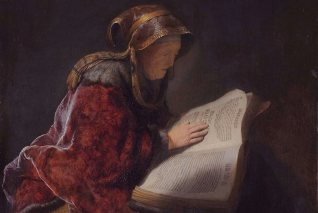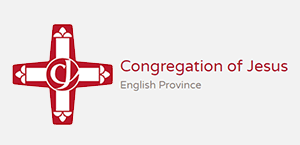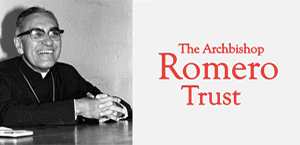Gospel in Art: Memorial of Saint Callistus
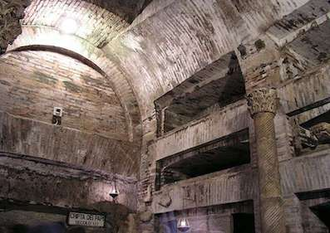
The Crypt of the Popes, Catacombs of Saint Callistus, Appian Way, 2nd to 4th centuries ©Christian Art
Source: Christian Art
Gospel of 14 October 2024
Luke 11:29-32
The crowds got even bigger, and Jesus addressed them:
'This is a wicked generation; it is asking for a sign. The only sign it will be given is the sign of Jonah. For just as Jonah became a sign to the Ninevites, so will the Son of Man be to this generation. On Judgement day the Queen of the South will rise up with the men of this generation and condemn them, because she came from the ends of the earth to hear the wisdom of Solomon; and there is something greater than Solomon here. On Judgement day the men of Nineveh will stand up with this generation and condemn it, because when Jonah preached they repented; and there is something greater than Jonah here.'
Reflection on the catacombs
Saint Callistus I, who served as Pope from around 217 to 222 AD, and who we celebrate today, is perhaps best known for his role in the development of the Christian doctrine of forgiveness and his advocacy for mercy. Before becoming pope, Callistus was a slave who had been imprisoned for embezzlement and later condemned to the mines in Sardinia. However, he was eventually freed, went through a huge moment of conversion and went on to work for Pope Zephyrinus, before succeeding him as Bishop of Rome. Callistus faced opposition from several factions within the Church, most notably from Hippolytus, who accused him of heresy for his more lenient views on penitence and his acceptance of those who had committed serious sins, such as adultery or apostasy, back into the Church after genuine repentance.
One of Callistus' significant contributions was his establishment of the Christian underground cemetery in Rome, known as the Catacombs of San Callisto, providing proper burial for Christians, who often faced persecution. The Catacombs of Callistus, located along the Appian Way in Rome, are one of the most significant and extensive catacombs in the city, covering approximately 20 kilometres of tunnels, on several levels. Over 50 martyrs and nine popes are buried there. The complex consists of various chambers and passageways, including chapels and crypts, and could accommodate an estimated half a million burials. The site remained in use for centuries until it was abandoned after the fall of the Roman Empire, rediscovered in the 19th century by archaeologist Giovanni Battista de Rossi.
One of the most famous areas within the Catacombs of Callistus is the Crypt of the Popes, which was the official burial place for several Bishops of Rome during the 3rd century. This small sacred space, also known as the "Little Vatican," houses the remains of nine popes and eight other high-ranking church officials, including Pope Sixtus II and Pope Zephyrinus, who was Callistus' predecessor. The crypt is marked by a Greek inscription, identifying it as the resting place of the "bishops of the Church of Rome." It was originally adorned with frescoes and other decorations, though many have faded over time.
LINKS
Gospel in Art: https://christian.art/
Today's Reflection: https://christian.art/daily-gospel-reading/luke-11-29-32-2024-2/



